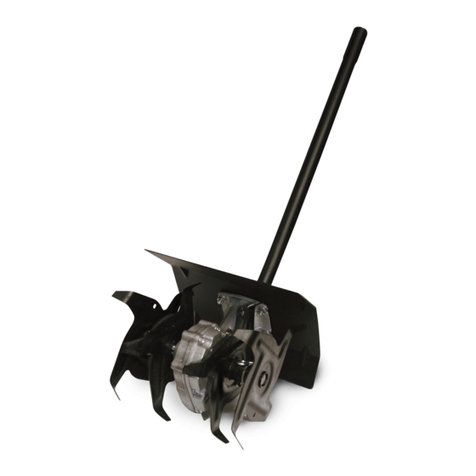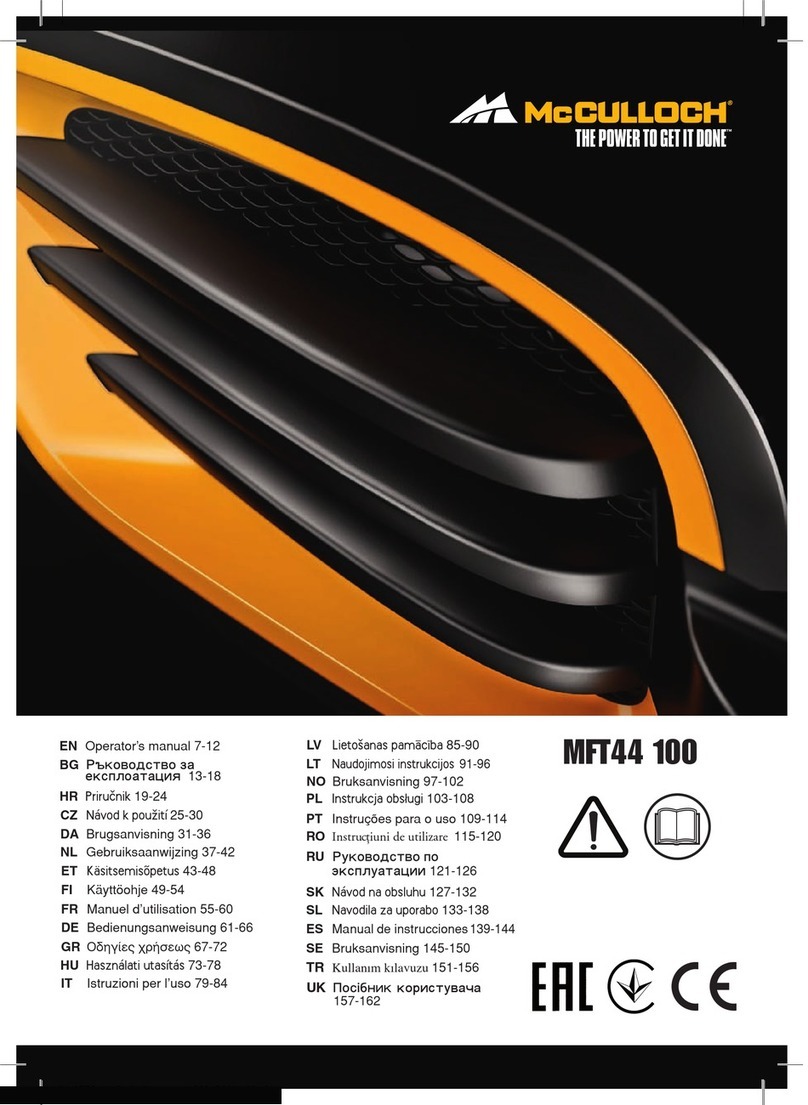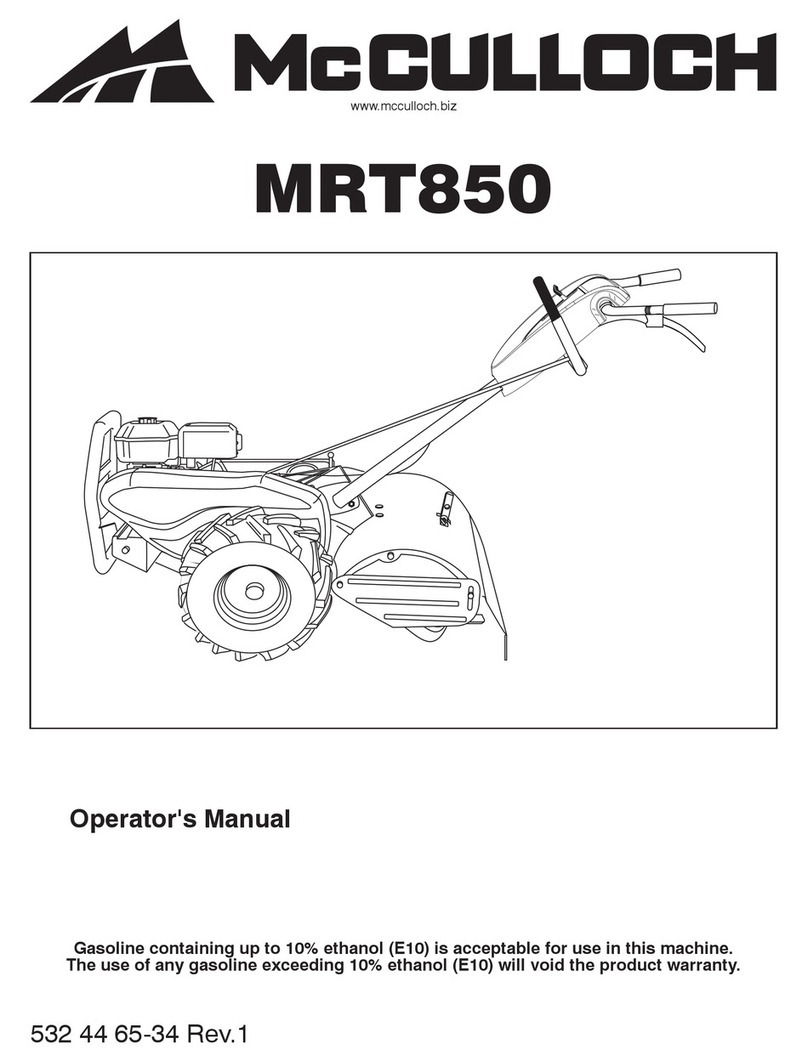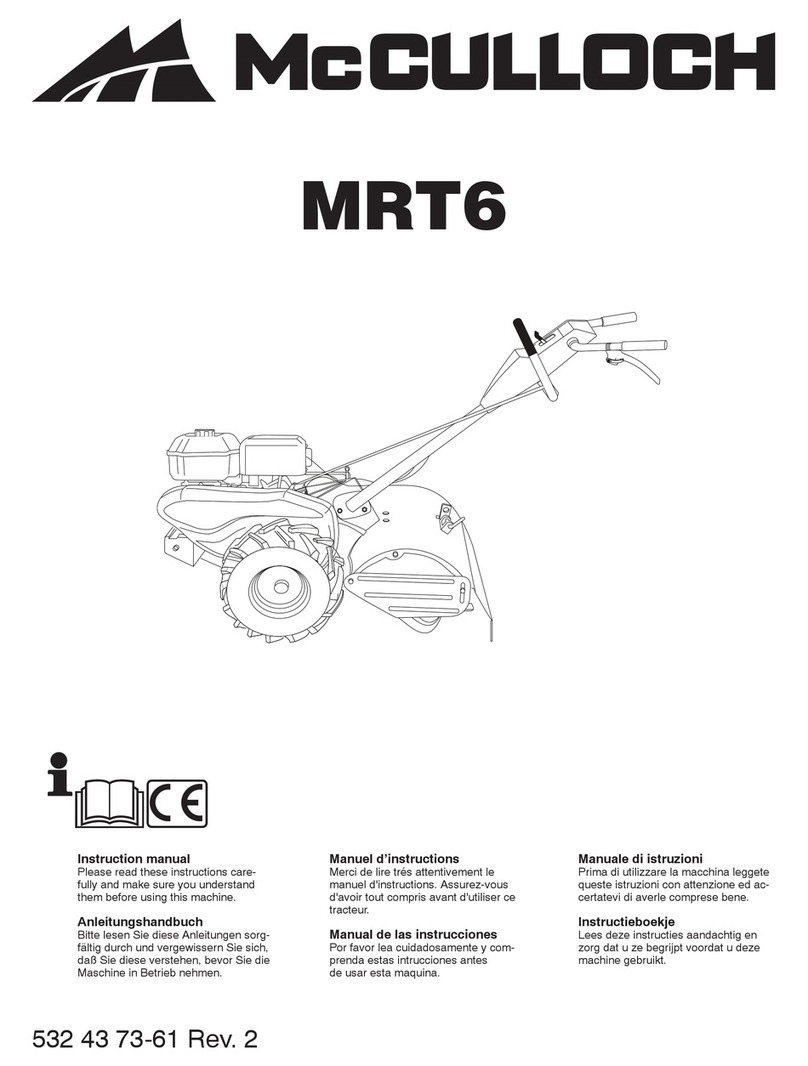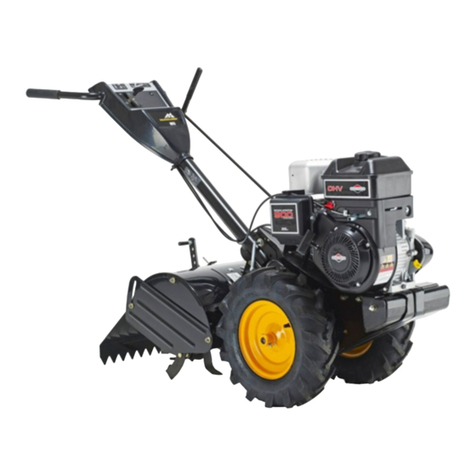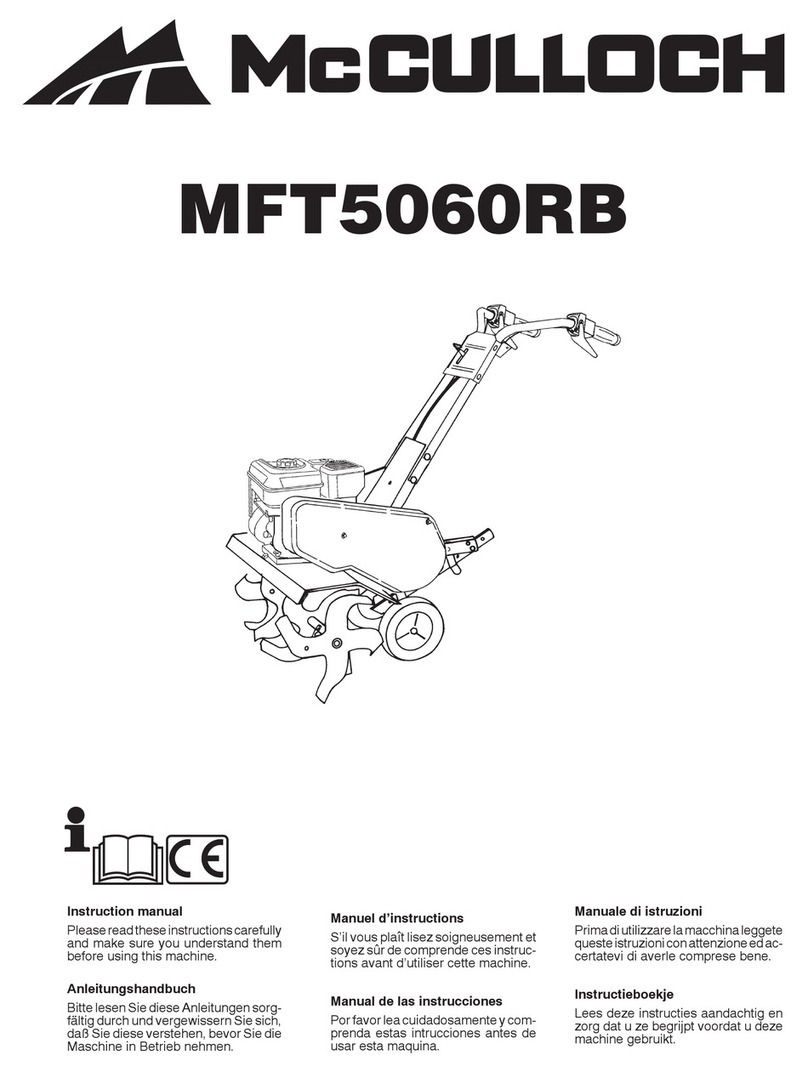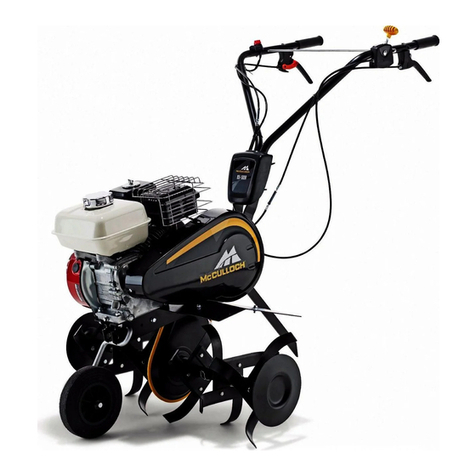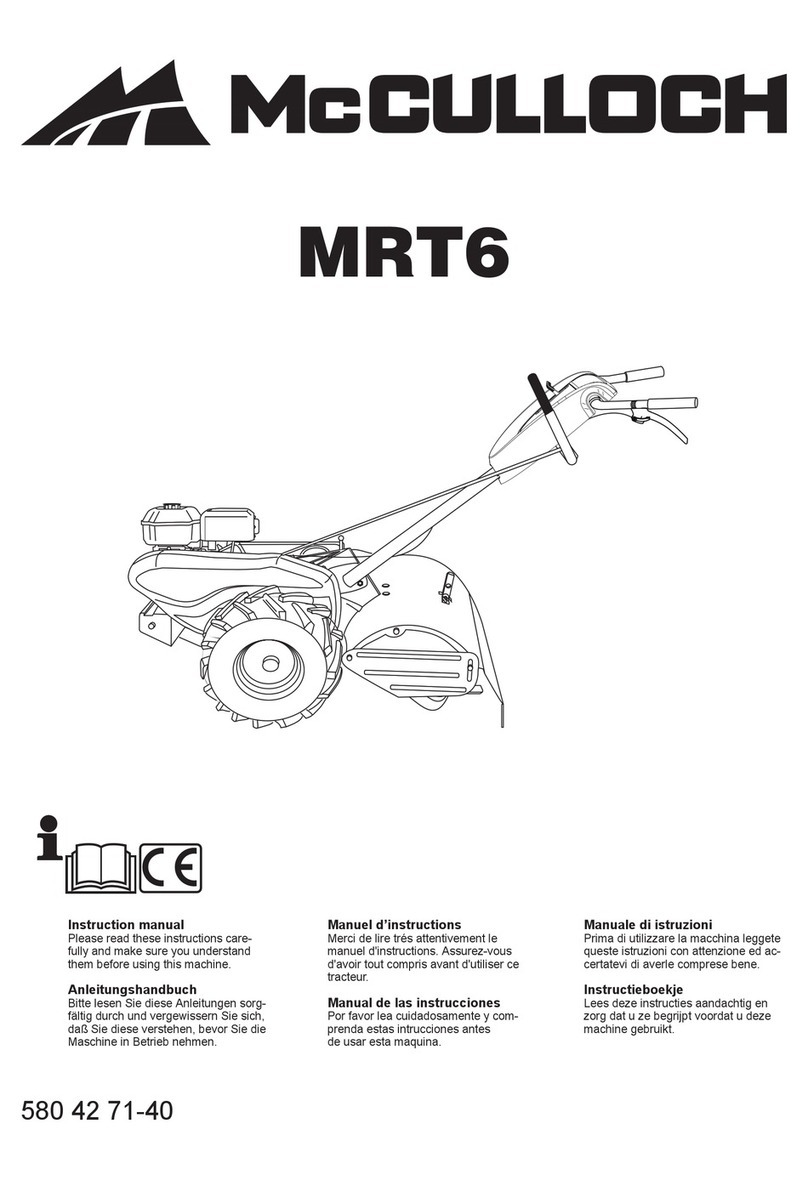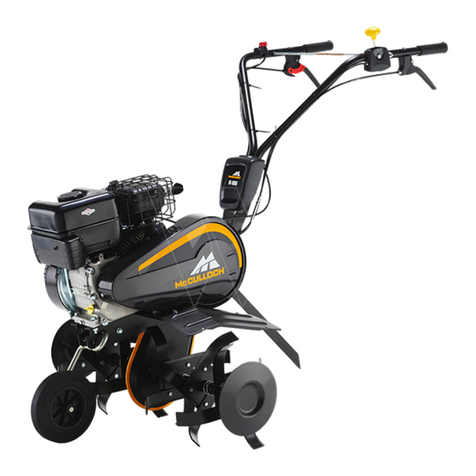
@ r. sAFETYRULEs
TRAINING
. Readthe irstructions carefully" Befamiliarwiththe conbols
and the proper use of the equipment;
. Never allow chìldren or people unfamiliar with these
instructions to use the machine, Local regulations can
restrict the age of the operator.
. Never work while people, especially children, or pets are
nearby.
. p in mind that the operator or user is responsible for
accidents or hazards occurring to other people or their
property.
PREPAIì/ATION
. Whileworking, always wearsubstantialfo ear and long
trousers. Do not operate the equipment when barefoot
or wearing open sandals.
. Thoroughly inspect the area were the equipment is to be
used and remove all obj which can bethrown by the
machine.
RNING: Petrol is highly flammable:
- store fuel in containers specifically designed for this
pur e;
- refuel outdoors only and do not smokewhile refu-
eling;
- addfuel orestartingtheengine.Neverremovethe
cap of the fuel tank or add petrol while the engine is
running or when the engine is hot;
- if petrol is spilled, do not attempt to s the engine
but move the machine awayfrom the area of spillage
and avoid creating any source of ignition until petrol
vapors have dissipated;
- replace all fuel tank and container caps securely.
. Fleplace faulty silencers.
. Beforeusing,alw visuallyinspecttoseethatthetools
are not worn or damaged. Replace worn or damaged
elements and bolts in sets to preserve balance.
OPERATION
. Do not operate the engine in a confined space where
dangerous carbon monoxide fumes can collect.
. Do notchangethe engine governorsettings or overspeed
the engine.
. Work only in daylight or in good artificial light.
. Alw be sure of your footing on slopes.
. Walk, never run.
. For wheeled rotary mach¡nes, work across the slopes,
slopes.
. Do not work on excessively steep slo
. Use o<trernecautionwhen reversing orprlling the machine
towards you.
. Do not run the engine indoors; exhaust fumes are dan-
. e engine carefully according to instructions and
with f well away from the tool(s)"
. Do not put hands or near or under rotating parts.
. Never pick up or carry a machine while the engine is
@I"SICHERHEfTS RSCHRIFTEN
SCHULUNG
. Auf keinen Fall Kindem oder Personen, die nicht mit d¡esen
sondere Kindern oder Haustieren arbeiten.
oder deren Eigentum ausges werden.
VORBERETUNG
. Bei der Arbeit immer feste
. Den Arbeitsbereich, in dem die Maschine betrieben werden
NUNG: Benln ist äußerst leicht enzündlicfr:
- ltaftstoff in besonders
rauchen.
oder heiB ist.
i-
-ssicher aufschrzuben.
um sicherzustellen, daß
BETRIEB
. Den Motor nicht in einem en n, in dem
I
betreiben.
. ,beiTageslicfrt oder guter lninstficfÞr Beleuchtung arbe-
: u"' Drehfräsen mit Rädern ""'åiJ::Itîi*",1*i.
.ne
nd
. Die FüBe und Hände nicht in die Nähe von oder unter dre-
. inen Fall anheben oder traoen solanoe
